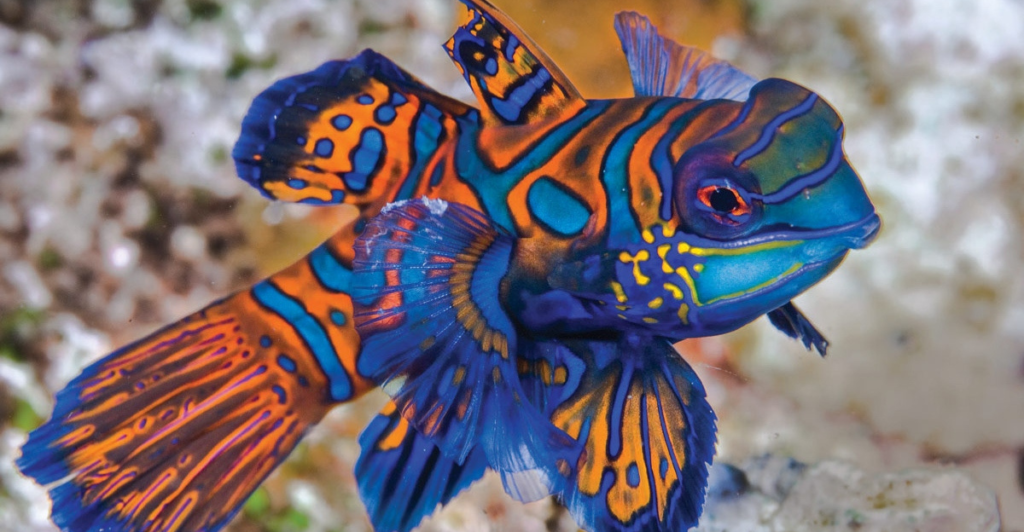
Many marine enthusiasts are captivated by the majesty of marine life. This goes far enough that people set up saltwater aquariums to showcase the beauty and diversity of marine life. Many hobbyists may gravitate towards common species, but there are some bolder saltwater fish that will make for an amazing work of living art.
Some of these species are rare gems, while others require a strict care routine to keep them happy and healthy. These fish stand out for their uniqueness and how they’ll change your aquarium into something truly one-of-a-kind and amazing to look at.
Whether you’re a novice marine hobbyist or just fascinated by the amazing world underneath the surface of the ocean, these amazing fish will change the way that you think about aquariums. Here are the top fish that take advantage of saltwater aquariums.
Peppermint Angelfish
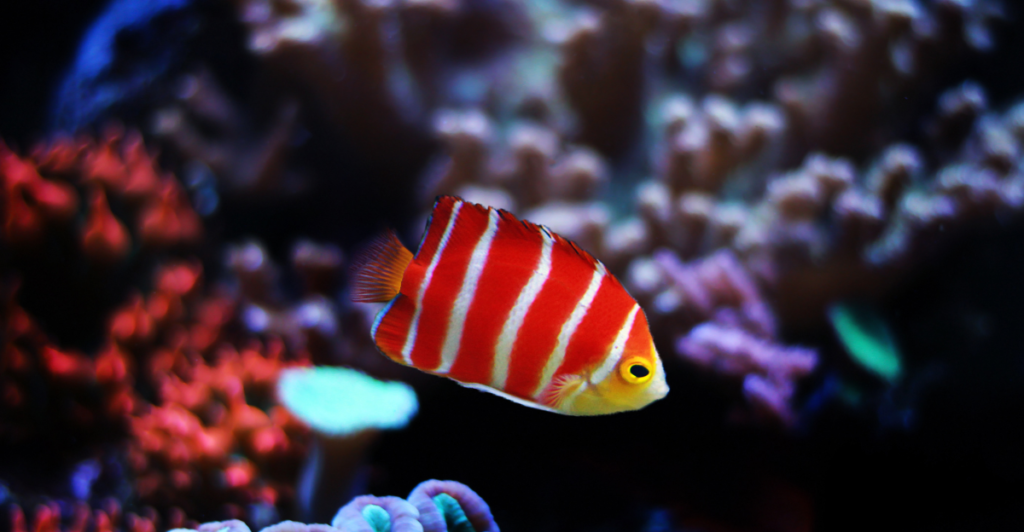
Peppermint Angelfish are some of the rarest and most expensive saltwater fish in the world. If you can find them, they usually cost between $25,000 and $30,000. They make their habitats in deep reefs around 60 to 130 meters.
They have an amazing physical aesthetic, with red and white stripes along their bodies, setting them apart from other fish species. Their heavy price tag means they aren’t often seen in ordinary aquariums, and only the wealthy or those with connections generally have them.
Collectors go crazy for this fish, and it’s mostly due to their elusive nature and deep sea habitat, meaning that finding them can be a challenge, let alone being able to catch them. They are a symbol of wealth and exclusivity for those who have one in their aquarium.
Bladefin Basslet

The bladefin basslet is another extremely rare fish that thrives in saltwater aquariums for those lucky enough to find them and afford their extravagant price tag. The fish are deep-sea dwellers, making them hard to find and catch.
They live in depths more than 150 meters and are notoriously hard, not just to catch, but also to transport back to aqauriums. They are delicate animals, and can perish before transportation is complete.
They have blade-like fins on their bodies and vibrant colors, which make them highly collectible fish for aquariums. They are generally $8,000 if you can find them, and their species illustrate the challenges and risks involved in collecting such amazing deep-sea fish.
Dr. Seuss Fish
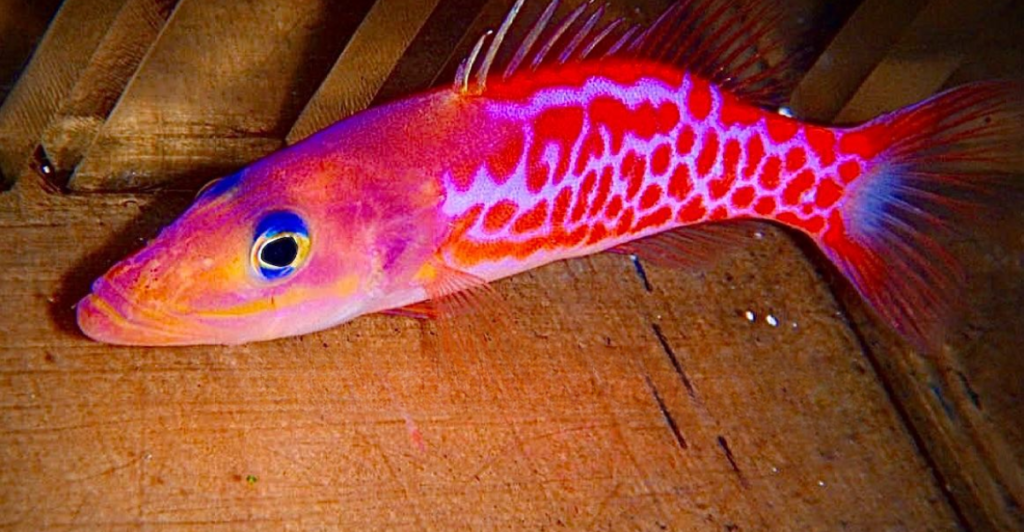
The Dr. Suess fish have a very unique appearance, as they get their name from the author with the strange imagination. They are a rare species that have unusual shapes and vibrant color patterns. They are only found in deep oceans around the Marshall Islands and showcase marine nature’s eccentricities.
Their rare nature has made them a priority for aquarists and add to the aesthetic of a tank like no other fish. They are an unconventional looking fish that may clash with other species, but are well-worth it to those that want a one-of-a-kind theme to their aquarium.
A deeper appreciation for marine biodiversity can be fostered by collecting strange and unconventional fish species.
Snowflake Moray Eel
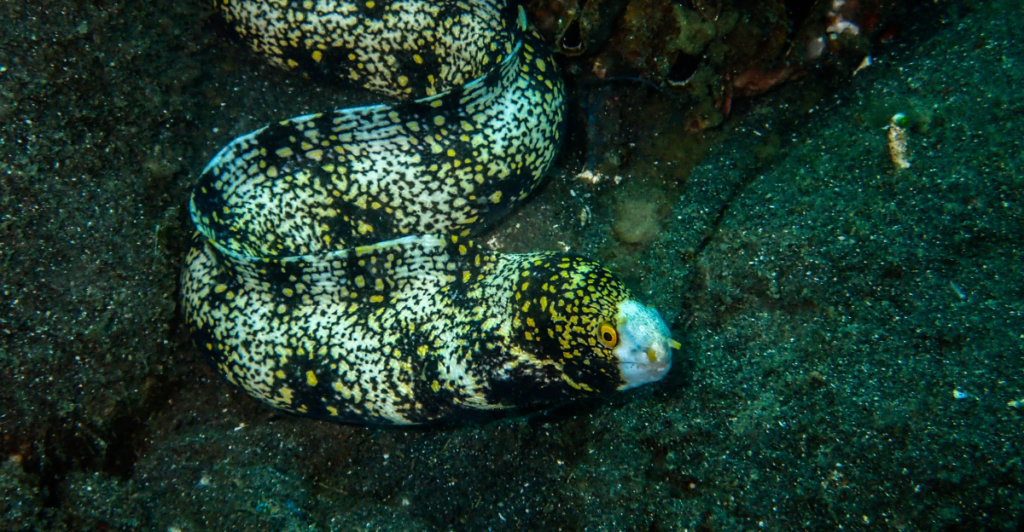
The snowflake moray Eel are amazing alternatives for hobbyists who want more than just traditional fish in their aquarium. They are amazing marine animals that have alternating black, yellow, and white patterns along their bodies. For those that are interesting in keeping eels in their tank, they require more maintenance than many fish species and require soft sand to burrow in.
They are a stark contrast to tradition, multi-colored fish in aquariums, and for those that are willing to put in the effort, they can add an amazing and unique look to your tank. They offer a fresh perspective on aquarium design, focusing on texture and movement rather than color.
Snowflake moray eels provide an opportunity to have a diverse microhabitat inside of your aquarium as long as you ensure the different species get along.
Masked Angelfish
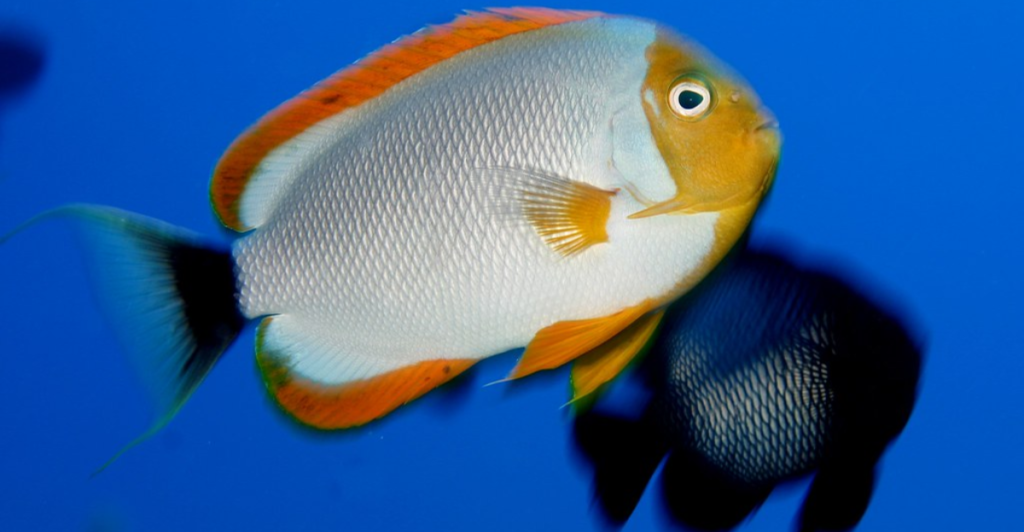
The masked angelfish stands out amidst other fish species for its amazing look and its rare nature. The fish is native to Hawaiian Islands and can live deeper than 300 feet in protected waters. They have an amazing white coloration with fine markings which give them subtle beauty in contrast to bolder fish species with vibrant colors.
They are often thought as a sophisticated person’s fish due to their subtle beauty. They can be a good addition to an aquarium that already has bolder fish and needs a more nuanced look. Many believe less is more, and this fish speaks that in volumes.
Since they live in protected waters, they must be acquired legally and humanely, highlighting the importance of respecting natural habitats and conservation efforts.
Dragonface Pipefish
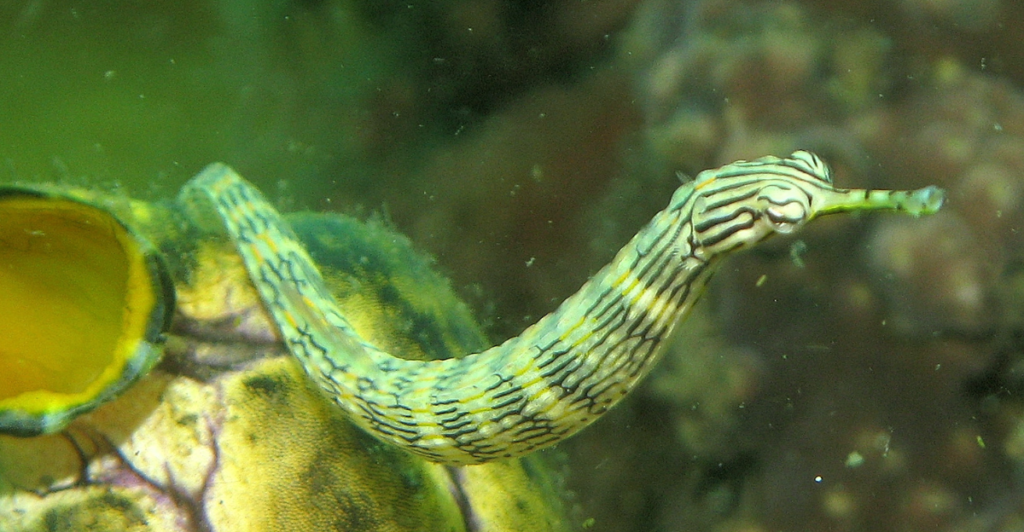
The Dragonface pipefish is a truly unique species that will standout in any saltwater aquarium. They have a surprising physical appeal to them as they resemble small sea dragons with long bodies and intricate patterns on them. They can be an amazing addition to an aquarium, but they do need a lot of care and maintenance.
Tank conditions have to be optimal for this species to thrive, but they are well worth it when the reward is watching their mesmerizing movements and unique aesthetics as they move in the tank. Precise water quality is needed to keep this species happy, and regular aquarium maintenance is an important factor.
They are a species that require effort, dedication, and patience in aquarium keeping, since they only thrive in a stable, well-maintained habitat.
Royal Gramma
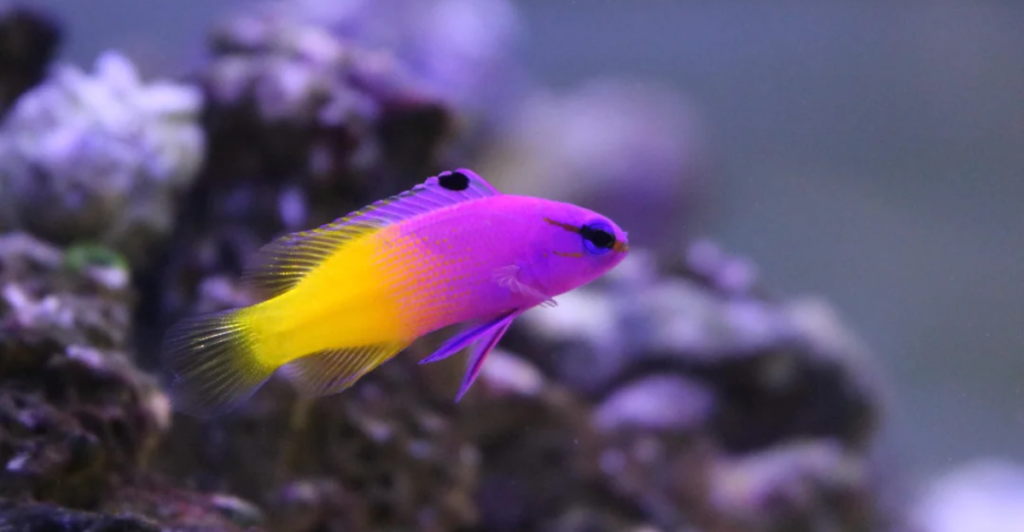
The royal gramma is a fish that combines amazing visual appeal and affordability. They have an amazing purple-to-yellow color gradient that makes them a sought after species among hobbyists that want an easy to care for and peaceful fish.
Royal grammas have an interesting biological trait, as they all start out as females, with dominant individuals morphing into males. This fascinating trait can add a talking point to your aquarium and its strange and wonderful dynamics.
They have complex social behaviors, which encourage hobbyists to explore more diverse tank ecosystems. When understanding their behaviors, hobbyists can introduce other species that may get along with them and create an amazing microhabitat.
Mandarin Fish
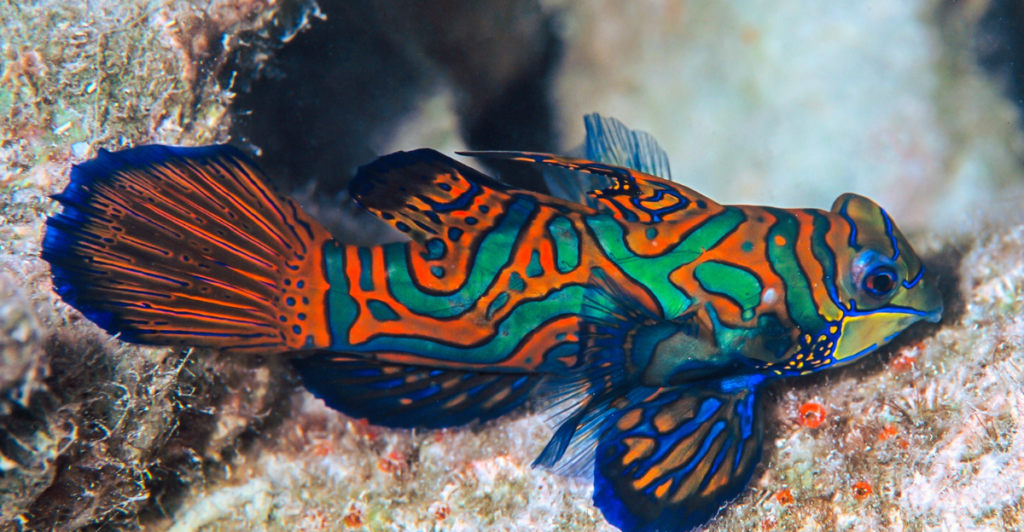
The Mandarin fish is most notable for its amazing coloration, sometimes called psychedelic. These fish are a special case and require specialized feeding to thrive and live their best. While many other species can have frozen worms or flakes, Mandarin fish require live food, such as copepods, to stay healthy.
They have intricate patterns on their bodies which make them highly prized by collectors but are also one of the most demanding with their care.
They require dietary diversity with their live feeding which means they may not get along with other fish in the aquarium. Hobbyists can cultivate their own source of food for the Mandarin fish to save money and keep a stable food source.
Candy Basslet
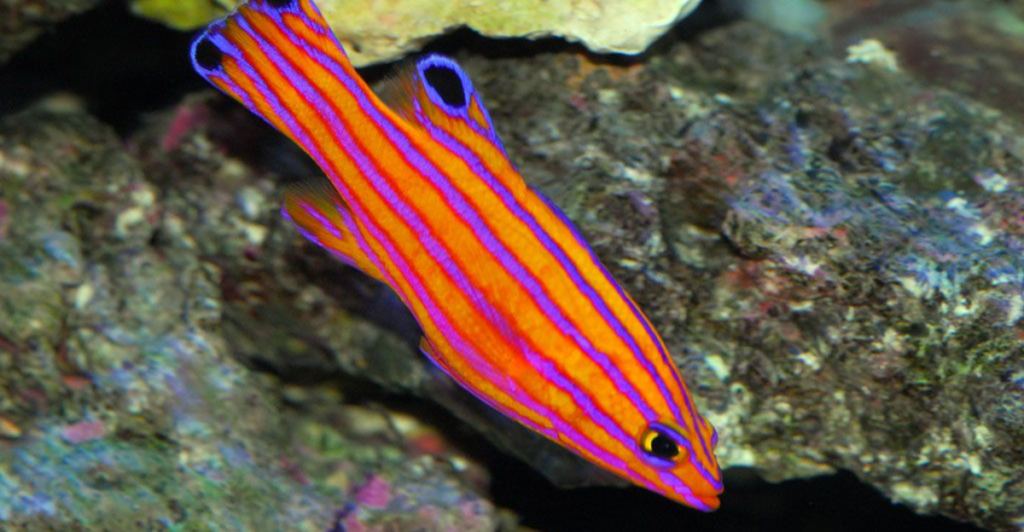
The candy basslet is found in Caribean waters like Curacao. This fish is praised for its amazing yellow and blue hues while not requiring a lot of specialized care to thrive. It is a rare fish, but showcases how advancements in breeding techniques make fish that were previously hard to care for much easier today.
This pivot showcases a trend towards a more sustainable industry. The candy basslet could symbolize the future of aquarium keeping, where conservation and accessibility blend together.
With these sustainable breeding practices, hobbyists can enjoy stunning breeds while helping to contribute towards the preservation of marine ecosystems.
Explore more of our trending stories and hit Follow to keep them coming to your feed!

Don’t miss out on more stories like this! Hit the Follow button at the top of this article to stay updated with the latest news. Share your thoughts in the comments—we’d love to hear from you!







